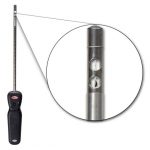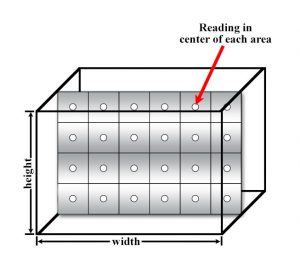- Sign In
- |
- Sign Up
- |
- My Quote (0)
- |
- CART (0)
This transmitter uses a heated mass flow sensor which allows for precise velocity measurements at various flow rates and temperatures. The 641's 16 field selectable ranges provides it the versatility to be selected for several air flow applications. The optional LED produces a complete, low-cost solution for local indication of air flow.
This transmitter uses a heated mass flow sensor which allows for precise velocity measurements at various flow rates and temperatures. The 641's 16 field selectable ranges provides it the versatility to be selected for several air flow applications. The optional LED produces a complete, low-cost solution for local indication of air flow.
Features

Anemometers are instruments used to measure wind speed or air velocity in meteorology and aerodynamics. The name is derived from the Greek root Anemos, meaning wind. There are many anemometer sensor types with one of the most popular being thermo, or hot-wire, anemometers for HVAC/R air velocity monitoring. Thermo-anemometers use a sensor element that is heated up beyond the ambient temperature. Airflow moving past the sensor will have a cooling effect that is directly proportional to the flow velocity.
Hot wire anemometers come in three basic types: constant current, constant voltage, and constant temperature. All three types have circuits that are based on trying to maintain a specific variable during the cooling effect based on Ohm's Law. Thermo-anemometers offer good low flow detection, fast response times, and high rangeability of measurements. They are omni-directional, making them good for turbulent flows and easier to use than pitot tubes, but are more fragile than pitot tubes.

Usually, a probe style sensor is made for insertion into ducts and pipes. For constant temperature thermo-anemometers, two temperature sensors are installed at the end of the probe, typically resistance temperature detectors (RTDs). One RTD measures the ambient temperature as a reference. The second RTD is continuously maintained at a constant temperature above ambient. The higher the air velocity, the more current is required to maintain the second RTD's temperature. Based on the current usage, the air velocity is calculated.
Like a pitot tube, thermo-anemometers are a single point sensing device that requires being in the center of the velocity profile or the use of traverse readings for accurate measurements.
